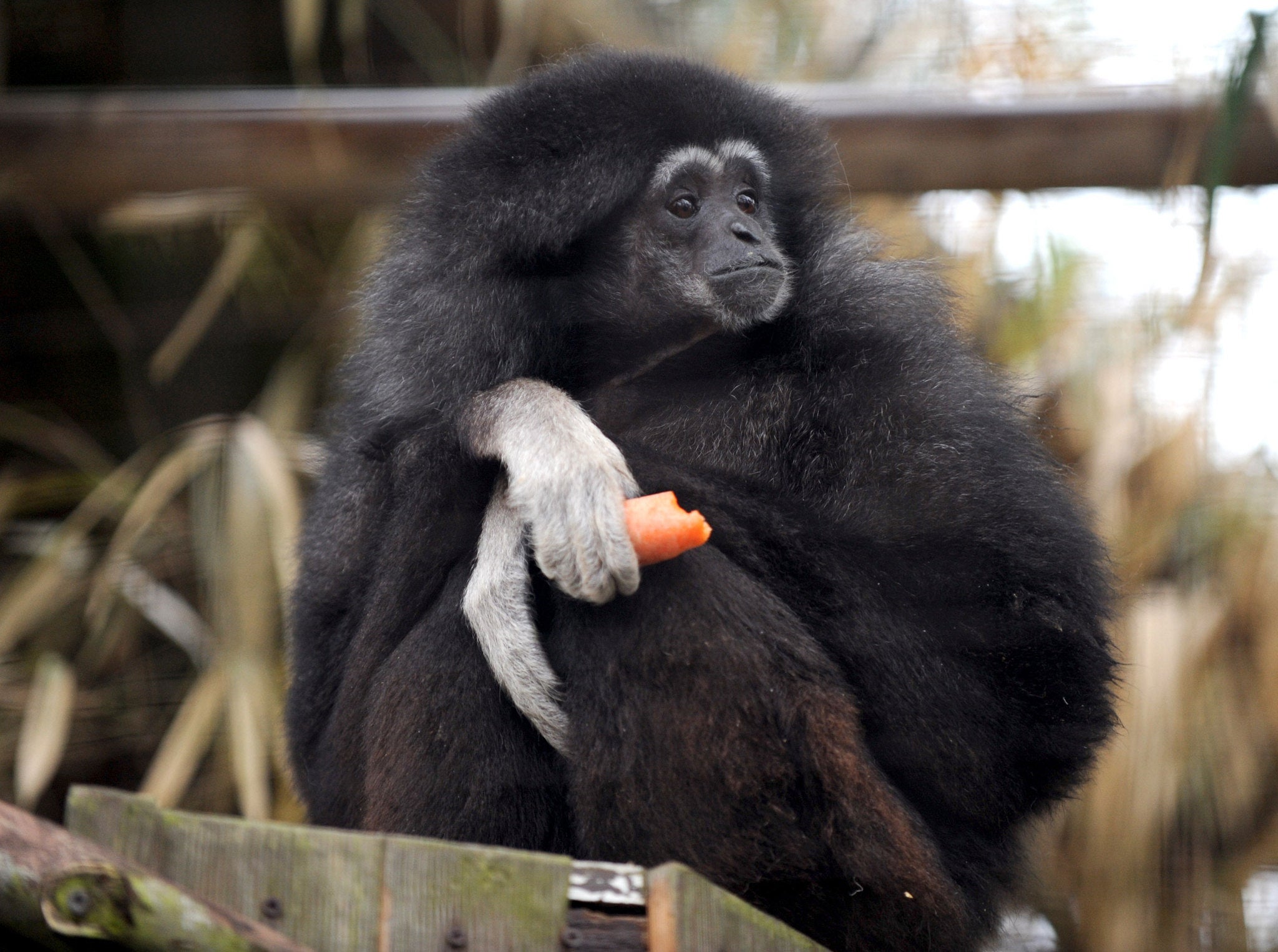Gibbons may communicate as our ancestors did, scientists say
Scientists have found a form of language used by gibbons to communicate

Scientists may have discovered a form of language used by animals, similar to that used by our own ancestors.
A study into the sounds white-handed gibbons make by Angela Dassow and Michael Coen at the University of Wisconsin-Madison has led to the discovery.
While it has long been known that animals can communicate with one another, the research has provided “clear evidence” that animals have linguistic structures and words that mirror those used by people.
Researchers have discovered that the gibbons have a range of sounds, or “words”, with different meanings that can warn of predators or be used to discipline children or other member of the gibbon group, the New Scientist has reported.
Language has long been considered exclusive to humans, according to Dr Dassow, but now it would seem that animals have similarly complex ways of communicating.
In her dissertation she wrote: "Language is a human affair. It transfers conceptual knowledge from speaker to listener and has extraordinarily generalisable descriptive powers.
"We reevaluate this distinction in the context of vocalisations of white-handed gibbons, demonstrating previously unrecognised complexity and structure in their vocalisation."
Professor Coen, who writes algorithms to make sense of the sounds, agreed with her findings. “Are they words as we know them? No. Does that mean that only human words are words? No, I don’t think so,” he told the Journal Times at the beginning of the study.
“The bottom line would tentatively seem to be that language is far more universal than linguists believe.”
It is likely that the animal noises sound similar to how humans may have communicated by song, 1.8m years ago; Esther Clarke, an anthropologist at Durham University said.
Gibbons are just one species that is being studied for their communication skills. Dolphins and rats, among others, are also being assessed.
Join our commenting forum
Join thought-provoking conversations, follow other Independent readers and see their replies
Comments
Bookmark popover
Removed from bookmarks